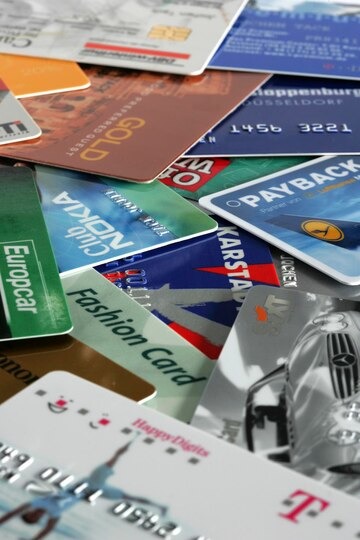How to Apply for a Credit Card in the USA ?
Applying for a credit card can seem like a daunting process, especially if you’re new to personal finance or have never had a credit card before. However, understanding the steps involved can make it a straightforward experience. This guide will take you through everything you need to know about applying for a credit card in the USA, from understanding the types of credit cards available to tips for approval.
Understanding Credit Cards
Before diving into the application process, it’s essential to understand what a credit card is. A credit card is a payment card issued by financial institutions, allowing cardholders to borrow funds to pay for goods and services. Unlike debit cards, which draw directly from your bank account, credit cards involve borrowing money with the expectation that you’ll pay it back, often with interest if not repaid by the due date.
Types of Credit Cards
There are several types of credit cards you can choose from, each catering to different financial needs and spending habits:
- **Secured *Credit Cards*: These require a cash deposit that serves as collateral. They’re ideal for individuals looking to build or rebuild their credit history.
- **Unsecured *Credit Cards*: Most common and don’t require a deposit. They’re available to individuals with varying credit scores.
- **Rewards *Credit Cards*: Offer points, cash back, or travel rewards for purchases. These are suitable for frequent spenders who want to maximize their benefits.
- **Student *Credit Cards*: Designed for college students with limited or no credit history, these typically have lower credit limits and easier approval processes.
- **Business *Credit Cards*: Tailored for small business owners, offering features like expense tracking and business rewards.
- **Balance Transfer *Credit Cards*: Allow you to transfer existing debt from other *credit cards* to benefit from lower interest rates.
Checking Your Credit Score
Your credit score is a key factor in determining your eligibility for a credit card and the terms you’ll receive. Most lenders look for a score above 650, though some credit cards are available to individuals with lower scores.
- Get Your Credit Report: You can obtain a free credit report from each of the three major credit bureaus (Experian, Equifax, and TransUnion) once a year at AnnualCreditReport.com.
- Check Your Score: Various websites and services offer free credit score checks. Familiarize yourself with your score to know where you stand before applying.
- Address Errors: If you find inaccuracies in your credit report, address them immediately, as they can negatively impact your score and your ability to secure a credit card.
Choosing the Right Credit Card
Once you know your credit score, you can start looking for the right credit card. Here are some factors to consider:
- Interest Rates: Look for the Annual Percentage Rate (APR). A lower APR is preferable, especially if you plan to carry a balance.
- Fees: Check for annual fees, late payment fees, and foreign transaction fees. Some credit cards come with no annual fees, which can save you money.
- Rewards Program: If you opt for a rewards credit card, assess how the rewards structure aligns with your spending habits. Some cards offer better rewards on specific categories like dining or groceries.
- Credit Limit: Consider how much you need to borrow. New credit cards often have lower limits, which can be increased over time with responsible use.
- Customer Service: Research the lender’s reputation for customer service, as this can significantly affect your experience.
Preparing Your Application
When you’re ready to apply for a credit card, gather the necessary documents and information:
- Identification: Have your Social Security number or Individual Taxpayer Identification Number ready.
- Proof of Income: This could be your pay stubs, tax returns, or bank statements that demonstrate your income level.
- Employment Details: Lenders may ask for your employer’s name, your position, and how long you’ve been employed.
- Housing Information: Be prepared to provide details about your living situation, such as your monthly rent or mortgage payment.
Applying for the Credit Card
The application process for a credit card can typically be completed online, via mail, or in-person at a bank or credit union. Here’s how to navigate the online application, which is the most common method:
- Visit the Lender’s Website: Choose the credit card you want and go to the lender’s website.
- Fill Out the Application: Provide all required information, including personal details, financial information, and employment history. Make sure everything is accurate to avoid delays.
- Review and Submit: Before submitting, review your application for any errors or omissions. Submit the application once you’re satisfied.
- Receive a Decision: Many lenders provide instant approval, while others may take a few days to review your application. If approved, you’ll receive your credit card in the mail within a week or two.
After Your Application
If your application is approved, congratulations! Here are some tips for responsible credit card use:
- Pay On Time: Always make at least the minimum payment by the due date to avoid late fees and interest charges.
- Keep Balances Low: Aim to use less than 30% of your available credit to maintain a good credit score.
- Review Statements: Regularly check your statements for unauthorized charges and to keep track of your spending.
- Build Your Credit: Use your credit card responsibly to improve your credit score over time.
Conclusion
Applying for a credit card in the USA is a manageable process when you take the time to understand your options and prepare accordingly. By following the steps outlined in this guide, you can find a credit card that fits your financial needs and goals. Remember to use your credit card wisely to build a strong credit history, which will serve you well in the future. With responsible management, a credit card can be a powerful financial tool.
#CreditCard #PersonalFinance #CreditScore #FinancialLiteracy #CreditCardTips #MoneyManagement #CreditCardsUSA #BuildingCredit #SmartSpending #DebtManagement

